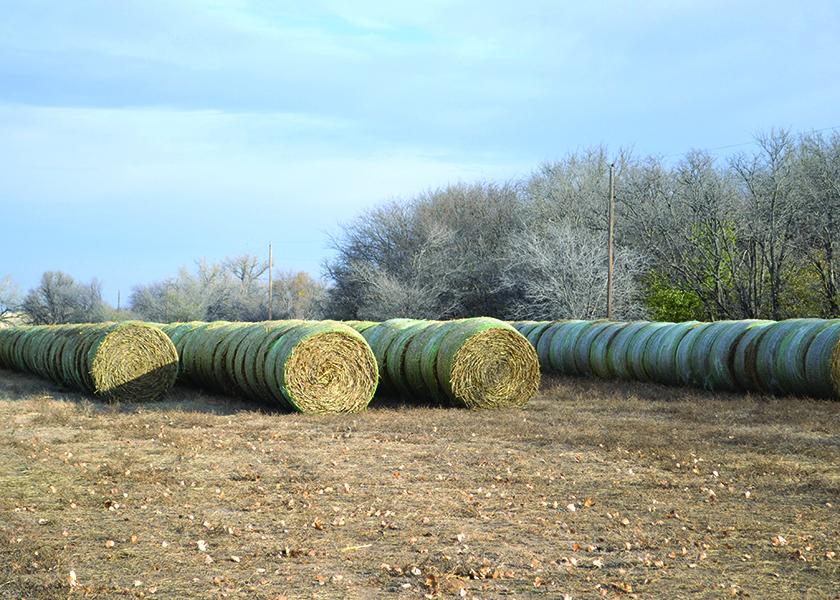Round Bale Storage Tips

Expanding drought in the West and Central Plains has already increased demand for hay and will likely push prices higher this summer. That makes minimizing storage losses to large round bales even more valuable.
University Extension specialists say from one-third
to as much as one-half of the hay in a large, round bale is located in the outer 6" of the bale — the portion that is the most susceptible to weather damage. Initial bale quality will affect dry-matter losses, but outside storage losses can exceed 25%. Losses can be minimized by proper storage management.
Storing hay indoors is best but not always possible. If you must store large, round bales outside, select a proper storage site and stacking method. Here are five tips to minimize losses to large, round bales.
1. Increase bale density
Tightening the outer layer of the bale helps reduce moisture absorption and thus decay. The recommended minimum density is 10 lb. of hay per cubic foot.
2. Use covers
Round bales stored outside and covered with either plastic or canvas experience less deterioration than unprotected bales. Weathering can reduce quality, particularly digestibility. Plastic wrap, net wrap or tarps can be used to prevent loss from weathering. Don’t stack bales on top of each other unless the entire stack is to be covered.
3. Select an appropriate storage site
Large, round bales should be stored in the open, not under shade and have good air circulation. The storage site should be well-drained and a 4"-to-6" course rock base will help minimize bottom spoilage of the bales. Ground contact can account for over half of the total dry-matter loss as water can wick up into the hay. To elevate the bales from the ground, use low-cost, surplus materials such as discarded pallets, fence posts, railroad ties, used tires or a layer of crushed rock to have good drainage.
4. Orient rows of bales to promote adequate drying
Round bales should be stacked in rows, end-to-end to minimize the exposure of the open bale face to the elements. Stack bales with three feet of spacing between rows. The rows should be oriented in a north-to-south direction. That allows faster drying after a rain with good sunlight and air flow. Vegetation should be mowed between the rows to increase air flow.







